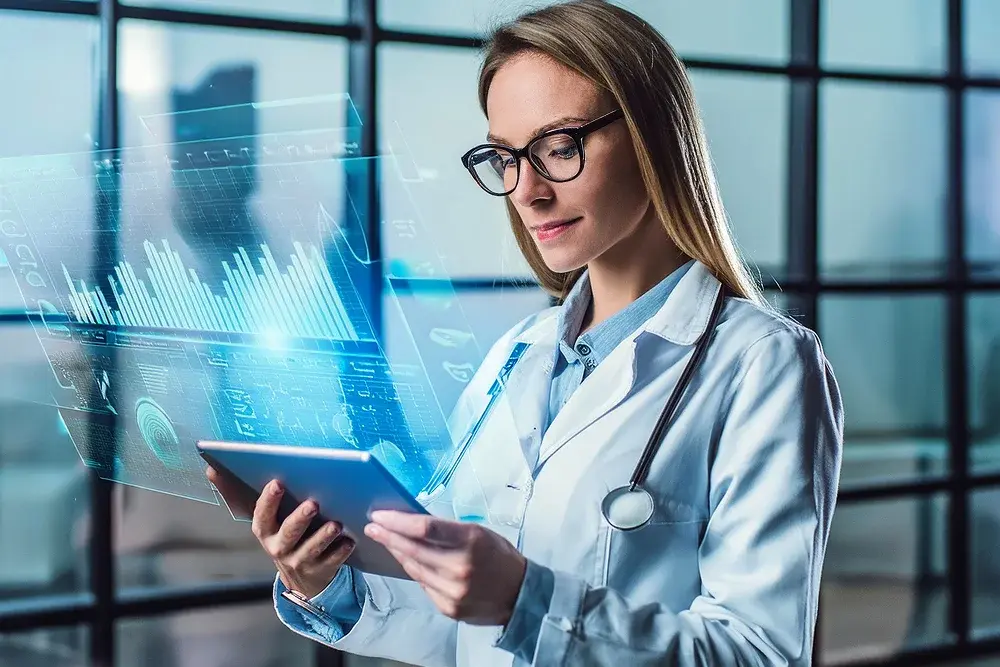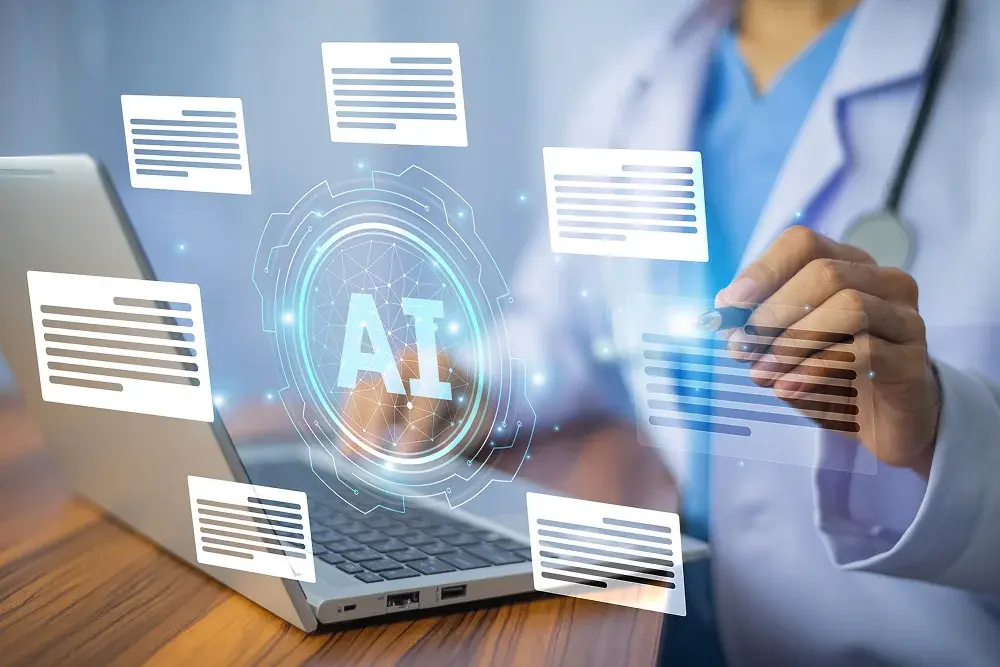Is your practice struggling to overcome operational bottlenecks despite trying everything from hiring extra staff to outsourcing certain tasks? A reliable healthcare practice management software might be the answer...
 Patient portal access is continually increasing, but there is still opportunity for medical practices to play a role in the adoption of these tools, according to a recent ONC data brief.
Patient portal access is continually increasing, but there is still opportunity for medical practices to play a role in the adoption of these tools, according to a recent ONC data brief.
Using the National Cancer Institute’s 2017 Health Information Trends Survey, which included more than 3,000 participants, ONC provides interesting insight on the access and use of online medical records and the use of technology for health related needs.
Key takeaways:
- Patient portal access is continually increasing, although fewer patients are using the tools. According to the survey, 52 percent of patients have patient portal access, compared to 42 percent in 2017. More than half of the patients surveyed who had patient portal access viewed their medical records, which represents 28 percent of the total survey population. However, 24 percent did not view their records, even though they had access. Patients cited the following reasons for not accessing their medical records:
- Wanting to speak with providers in person (76)
- Limited perceived need to view medical records (59 percent)
- Privacy concerns (25 percent)
- No avenue to access the website (20 percent)
- No longer having an online medical record (19 percent)
- Patients are twice as likely to use patient portals when encouraged by their healthcare provider. Healthcare providers play an important role in patient adoption of tools that provide insight into health data. According to the ONC report, 63 percent of patients who viewed their medical records were encouraged to do so by their providers. Only 38 percent of patients who viewed their medical records took the initiative on their own.
- Patient portals are proving to be useful. Patient portals help patients manage their own health. According to the data brief, 82 percent of patients surveyed said their online medical record is useful to monitoring their health and easy to understand. Results from the study also show that patients are using the portal to view their lab results, schedule appointments, completing paperwork, communicate with their healthcare provider via secure messaging, refill prescriptions and share medical records to another provider. These functions of a patient portal are beneficial to patients and providers.
The ONC data brief shows an impressive increase in patient access to digital health tools. Healthcare providers play a significant role in enabling and encouraging patients to take advantage of these tools. Continue reading the full report here.
Topics: Patient Care, Small Practice, digital age
RECENT POSTS



TOPICS
- EHR Solution (191)
- EHR (124)
- digital age (117)
- Patient Care (116)
- Medical Billing (110)
- Specialty-Specific EHR (110)
- Industry Update (97)
- Technology in Healthcare (84)
- EHR Features (79)
- Small Practice (77)
- Medical billing services (72)
- HIPAA Security (62)
- Integrated EHR (62)
- RCM (62)
- New Technology (44)
- Cloud-based EHR (43)
- Telemedicine (42)
- Healthcare Office Management (40)
- Practice EHR News (38)
- Kiosk (31)
- Revenue Cycle Management (28)
- AI Solutions (23)
- ePrescribing (21)
- AI Scribing (16)
- Best EHR Software (16)
- EMR (12)
- Practice Management Software (12)
- AI-powered Medical Billing (10)
- Client Favorites (10)
- Practice Automation (10)
- TeleVisit (10)
- The ONE (10)
- AI EHR (9)
- Switching to New EHR (9)
- MACRA/MIPS (8)
- Patient Portal (8)
- Urgent Care (8)
- AI Scribe (7)
- Best EHR Practice (7)
- EHR Integration (7)
- Psychiatry EHR (7)
- E-Prescribing (6)
- Product Updates (6)
- events (6)
- AI scanning (5)
- MIPS (5)
- Automated Health Tools (4)
- HIPAA (4)
- Insider (4)
- Internal Medicine EHR (4)
- MIPS Reporting (4)
- Mobile EHR (4)
- Orthopedics EHR (4)
- Podiatry (4)
- Podiatry EHR (4)
- Telehealth Platform (4)
- Chiropractic EHR (3)
- Digital Experiences (3)
- EHR Flaws (3)
- EHR Implementation (3)
- EHR for Chiropractors (3)
- EHR for Small Practices (3)
- Family Medicine EHR (3)
- Integrated Practice Management (3)
- Medical Practice Management Software (3)
- Patient Check-in Kiosk (3)
- PracticeEHR GO App (3)
- Regulatory Updates (3)
- Telehealth Platforms (3)
- Clearinghouse (2)
- Dermatology EHR (2)
- EHR Scheduling (2)
- Eligibility Verification in Medical Billing (2)
- Foot and Ankle Care (2)
- Foot and Ankle EHR (2)
- Health records 101 (2)
- Medical Coding Services (2)
- Medical Credentialing (2)
- Multilingual AI Scribe (2)
- Quality of Patient Care (2)
- Reporting Under MIPS (2)
- Risk and Liability in Medical Settings (2)
- What Works Clearinghouse (2)
- AI Scan (1)
- Bariatric EHR (1)
- Behavioral Health Practices (1)
- Billing Communication (1)
- Billing for Private Practices (1)
- Cardiology EHR (1)
- Cash Flow (1)
- Cashless Payments (1)
- Charting (1)
- Data Security (1)
- Dos and Don'ts (1)
- EHR Guides (1)
- EHR KPIs (1)
- EHR Questions to Ask (1)
- EHR Transition (1)
- EHR for Chronic Illness (1)
- EMR vs EHR Difference (1)
- ENT EHR (1)
- Endocrinology EHR (1)
- Family Medicine (1)
- Gastroenterology (1)
- Gastroenterology EHR (1)
- General Surgery EHR (1)
- Geriatric AI scribe (1)
- Geriatrics EHR (1)
- Guides (1)
- Healthcare Compliance Certification (1)
- Healthcare Practice Office Management (1)
- Help Center Videos (1)
- Insurance Reimbursement (1)
- KPI (1)
- Key Performance Indicators (1)
- Lab Processing (1)
- MACRA (1)
- Medical Billing Partner (1)
- Nephrology EHR (1)
- Neurology EHR (1)
- Pain Management EHR (1)
- Pediatrics EHR (1)
- Physical Therapy EHR (1)
- Practice Cash Flow (1)
- Practice Efficiency (1)
- Pulmonology EHR (1)
- Reconsider Your EHR (1)
- Simplify Practice Management (1)
- Staffing in Healthcare (1)
- Switch Medical Billing Providers (1)
- Urgent Care Medical Billing (1)
- Urology EHR (1)
- Voice-Activated AI Scribe (1)
- insurance claim denials (1)








